#24 June 1880
Text










“O Canada”, today the national anthem of Canada, was first performed in Quebec City, during a Saint-Jean-Baptiste Day banquet on June 24, 1880.
#Quebec City#Québec#architecture#travel#original photography#vacation#tourist attraction#landmark#cityscape#summer 2018#O Canada#national anthem of Canada#was first performed#Saint-Jean-Baptiste Day#24 June 1880#anniversary#Canadian history#flag of Canada#Maple Leaf Flag#Ottawa#Ontario#Montréal
8 notes
·
View notes
Text
Edith Finch Timeline
So I'm still organizing my theories (honestly they're more like a list of unanswered questions than a coherent theory right now) but I think my timeline is pretty much complete now that I've had a chance to go back through the pet cemetery and add all those in.
I do some wild speculating about Odin here that has no canon basis, just spinning ideas.
Things to notice- Just how many deaths happen on or very near birthdays. Not always the birthday of the person who dies and not every time, but suspiciously often.
The pets almost seem to fill in the years when no one human died? Like everything in this game it's nothing definitive enough to base a solid theory on, but it is odd.
TIMELINE
1439 - Earliest possible beginning of the Finch Family Curse based on the Odin viewmaster reel, as this is 500 years prior to the invention of the first viewmaster.
1445 - If the Odin viewmaster is the Model E made in 1955 (which I think it is), this is the start of the curse instead. Not much is happening in Norway during this period, but Vlad the Impaler was at the top of his game this year?
~About 7 generations of Finches dying horribly happens here.~
1880 - Odin is born. At some point between now and his death he writes "The Mysteries of Death and the Thereafter" and "Joining the Great Majority" which both appear to be books about the afterlife.
1896 - Heroic Age of Antarctic Exploration begins with the Belgian Antarctic Expedition and won't end till after WWI. Expeditions are marked by depression, starvation, insanity and scurvy. Many famous expeditions are made by Norwegian teams. Odin is 16.
1911 - A Norwegian expedition is first to reach the South Pole. The British Scott expedition chasing the same goal are lost. Odin is 31.
28 July 1914 - WWI begins, Odin is 34. Norway, "The Neutral Ally", remains neutral on the war but due to economic pressure from Britain commits its merchant marine fleet (one of the largest in the world) to Britain's service. Half the fleet is sunk and 2000 seamen are killed. If Odin was a sailor, he likely served. Alternatively, he may have been one of the wealthy merchants who profited greatly during the war. He clearly has a great deal of money to burn by 1937.
June 17 1915 - Sven is born.
April 8, 1917 - Edie is born.
1935 - At some point between now and Dec 1937, Edie and Sven marry and Sven takes Edith's last name.
1936 - Ingeborg and her newborn Johann Finch die in an unknown manner. Odin is 56, Edie is 19, Sven is 17.
Jan 7 1937 - Odin sets sail for Washington.
Dec 1937 - Arrival on Orcas Island, death of Odin at 57. Molly is born, on the boat? In the Old House? Sven and Edie build the cemetery, and then the house.
1938 - Churpy the budgie joins the family.
1939 - Invention of the viewmaster, earliest point the Odin story could have been recorded.
Sep 1939 - Sep 1945 - WWII. Sven was 24, and may have served or been drafted.
1940 - Burpy the house finch joins the family.
1941 - Churpy dies.
1947 - Christopher the goldfish joins the family.
Oct 31 1947 - Halloween Baby Barbara
Sometime between 1937 and 1947 - Molly's unnamed gerbil joins the family.
Dec 13 1947 - Molly dies of apparent poisoning after eating mistletoe berries, on or very near her 10th bday. She relates hallucinating having become several animals, most notably a cat. Christopher the fish dies shortly after. The fate of her unnamed gerbil is unrecorded, as none of the unattributed headstones are of the right age, but presumably it dies eventually.
1948 - Burpy dies at 8.
April 25 1950 - Sam and Calvin are born.
Aug 26 1952 - Walter is born.
1952 - Lurpy the Cockatiel joins the family.
1955 - Viewmaster Model E released- If this is the one used for Odin's story, that puts the beginning of the curse at 1455.
1956 - Lucy the dog joins the family.
1959 - Bailey the (???) joins the family.
Oct 31 1960 - Barbara dies, allegedly murdered, on her 16th bday. Her boyfriend Rick disappears the same night. The version of her death shared in the game is notably extremely unreliable and raises numerous questions. Rick is seen in a leg cast using crutches. Walter is 8, Sam and Calvin are 10 and notably absent from reported events.
Sept 23 1961 - Calvin dies at 11 falling from a cliff. He is seen wearing a weathered and heavily autographed leg cast. His model shows him with a black eye and several cuts.
1962 - Zoe the (???) joins the family.
1963 - Lurpy dies at 11. (Cockatiels have a life expectancy of 20-25 years)
Aug 26 1964 - Sven dies on Walter's 12th bday, while making a dragon shaped slide. He's 49.
1968 - Walter enters the bunker. He's 16. Durpy the Dove joins the family.
May 7 1968 - Dawn is born.
1969 - Lucy the dog dies.
June 20 1969 - Gus is born.
1970 - Zoe dies
1971 - Purply the Budgie joins the family.
1974 - Coco the (???) joins the family.
Jan 12 1976 - Gregory is born
Dec 7 1977 - Kay files for divorce after arguing with Sam about the curse.
Dec 19 1977 - Gregory drowns in the bath a month before his 2nd bday
1978 - Shadow the cat joins the family.
1979 - Purply dies at 8.
1980 - Rob the Bearded Dragon joins the family. Bob the Snake joins the family.
1981 - Durpy dies at 13.
1982 - Oliver the rabbit joins the family.
Nov 8 1982 - Gus dies, crushed by debris from a storm during Sam's wedding to an unnamed woman.
July 16 1983 - Sam dies, kicked off a cliff by a deer. Dawn is 15.
1984 - Bob dies at 4.
1985 - Daisy the (???) joins the family.
1986-87 Dawn goes to India, meets Sanjay.
1988 - Shadow the cat dies.
Dec 27 1988 - Lewis is born. Furpy joins the family. Tucker the (???) joins the family
1989 - Oliver the rabbit dies.
1991 - Rob dies at 10. Furpy dies.
1992 - Zurpy the Owl joins the family.
May 19 1992 - Milton is born.
1993 - Charlie the cat joins the family. Daisy dies.
1994 - Durpy Jr the Dove joins the family.
1995 - Zurpy dies at 3. Schatzi the (???) joins the family.
Feb 14 1999 - Valentine's Baby Edith. Lowest tide in a thousand years allegedly allows Edie to access the Old House. At some point between now and Nov 2010, three unnamed gerbils join the family, and then die.
Feb 22 2002 - Sanjay dies in an earthquake, eight days after Edith's 3rd bday, Dawn and children return to Finch House. Dawn writes "To Teach and To Learn" at some point in the next few years. At some point between now and 2010, Dawn probably finds a stray cat and names it Molly.
Oct 23 2003 - Milton disappears.
Late 2003 to Early 2004 - Dawn searches for Milton, eventually gives up and seals the rooms for unknown reasons.
March 31 2005 - Walter leaves the bunker and dies, allegedly hit by a train. There are several strange inconsistencies surrounding the circumstances of his death.
2006 - Durpy Jr dies at 12.
2009 - Schatzi dies
Nov 21 2010 - Lewis dies of apparent suicide one month before his 22nd bday.
Nov 28 2010 - A week after Lewis's death, Dawn informs Edie they are leaving the house. After Edie attempts to give Edith a book containing a story about their family which Dawn violently rips away, Dawn flees the house with Edith immediately, leaving Edie and all her belongings behind.
(Molly the cat is not mentioned in regards to the move, so she may have died by this point, but she is not listed in the graveyard, so it's possible she was simply left behind. There is a taxidermy calico in Sam's room, but Sam was dead before Molly could reasonably have joined the family, so this is unlikely to be her. A cat is seen outside human Molly's room in 2016, which may prove she's still alive- but she'd be around 14 years old. An unlikely age for a cat abandoned outdoors for 7 years.)
Nov 29 2010 - Edie is found dead by nursing care workers, and may have killed herself by combining alcohol with her medication, intentionally or otherwise. She's 93, the only member of her family to live longer than her father, who died at 57.
Dec 5 2010 - The date on Edie's tombstone, a week after when she supposedly died.
May (around the 12-18th?) 2016 - Edith becomes pregnant.
Oct 12 2016 - Dawn dies of a chronic illness at 48. Edith is 16 and about 6 months pregnant.
Oct 13 - 19 2016 - Edith returns to the Finch House at 22 weeks pregnant.
Jan 18 2017 - Edith dies in childbirth a month before her 18th bday. Christopher is born (possibly named for Molly's goldfish?).
2027? - At some point in the future, a young Christopher returns to the house, which has changed since the last time it was seen. He is wearing a cast.
A note on unrecorded pets- There are additionally 5 (possibly 6?) unmarked pet graves in the cemetery. One of the blank stones presumably belongs to Rob the bearded dragon, who has a memorial in Edie's room but no gravestone. One is marked as a fish and another is a rabbit, with no names or dates. One is a knocked over and unreadable sign of the same kind used for the birds, indicating it may be an otherwise unrecorded bird. There is also a statue of a frog- the knocked over sign may instead refer to an unrecorded pet frog, or the frog statue might be a separate gravestone, or simply a decoration. This leaves one blank headstone with no indication of what might lie beneath it. Let's assume it's a mass grave for gerbils.
22 notes
·
View notes
Text
Today the Church remembers the 108 Blessed Polish Martyrs.
Orate pro nobis.
The 108 Blessed Polish Martyrs were Roman Catholic Christians in Poland killed during World War II by the Nazis, either in the concentration camps or by mass slaughter on the streets. The group comprises 3 bishops, 79 priests, 7 male religious, 8 female religious, and 11 lay people. There are two parishes named for the 108 Martyrs of World War II in Powiercie in Koło County, and in Malbork, Poland.
The 108 Blessed Martyrs were beatified on 13 June 1999 by Pope John Paul II in Warsaw, Poland.
List of Martyrs
Bishops
1. Antoni Julian Nowowiejski (1858–1941 KL Soldau), bishop
2. Leon Wetmański (1886–1941 KL Soldau), bishop
3. Władysław Goral (1898–1945 KL Sachsenhausen), bishop
Priests
1. Adam Bargielski, priest from Myszyniec (1903–1942 KZ Dachau)
2. Aleksy Sobaszek, priest (1895–1942 KL Dachau)
3. Alfons Maria Mazurek, Carmelite friar, prior, priest (1891–1944, shot by the Gestapo)
4. Alojzy Liguda, Society of the Divine Word, priest (1898–1942 KL Dachau)
5. Anastazy Jakub Pankiewicz, Franciscan friar, priest (1882–1942 KL Dachau)
6. Anicet Kopliński, Capuchin friar, priest in Warsaw (1875–1941)
7. Antoni Beszta-Borowski, priest, dean of Bielsk Podlaski (1880–1943, shot near Bielsk Podlaski)
8. Antoni Leszczewicz, Marian Father, priest (1890–1943, burnt to death in Rosica, Belarus)
9. Antoni Rewera, priest, dean of the Cathedral Chapter in Sandomierz (1869–1942 KL Dachau)
10. Antoni Świadek, priest from Bydgoszcz (1909–1945 KL Dachau)
11. Antoni Zawistowski, priest (1882–1942 KL Dachau)
12. Bolesław Strzelecki, priest (1896–1941 KL Auschwitz)
13. Bronisław Komorowski, priest (1889–22 March 1940 KL Stutthof)
14. Dominik Jędrzejewski, priest (1886–1942 KL Dachau)
15. Edward Detkens, priest (1885–1942 KL Dachau)
16. Edward Grzymała, priest (1906–1942 KL Dachau)
17. Emil Szramek, priest (1887–1942 KL Dachau)
18. Fidelis Chojnacki, Capuchin friar, priest (1906–1942, KL Dachau)
19. Florian Stępniak, Capuchin friar, priest (1912–1942 KL Dachau)
20. Franciszek Dachtera, priest (1910–23 August 1942 KL Dachau)
21. Franciszek Drzewiecki, Orionine Father, priest (1908–1942 KL Dachau); from Zduny, he was condemned to heavy work in the plantation of Dachau. While he was bending over tilling the soil, he adored the consecrated hosts kept in a small box in front of him. While he was going to the gas chamber, he encouraged his companions, saying "We offer our life for God, for the Church and for our Country".
22. Franciszek Rogaczewski, priest from Gdańsk (1892–1940, shot in Stutthof or in Piaśnica, Pomerania)
23. Franciszek Rosłaniec, priest (1889–1942 KL Dachau)
24. Henryk Hlebowicz, priest (1904–1941, shot at Borisov in Belarus)
25. Henryk Kaczorowski, priest from Włocławek (1888–1942)
26. Henryk Krzysztofik, religious priest (1908–1942 KL Dachau)
27. Hilary Paweł Januszewski, religious priest (1907–1945 KL Dachau)
28. Jan Antonin Bajewski, Conventual Franciscan friar, priest (1915–1941 KL Auschwitz); of Niepokalanow. These were the closest collaborators of St Maximilian Kolbe in the fight for God's cause and together suffered and helped each other spiritually in their offering their lives at Auschwitz
29. Jan Franciszek Czartoryski, Dominican friar, priest (1897–1944)
30. Jan Nepomucen Chrzan, priest (1885–1942 KL Dachau)
31. Jerzy Kaszyra, Marian Father, priest (1910–1943, burnt to death in Rosica, Belarus)
32. Józef Achilles Puchała, Franciscan friar, priest (1911–1943, killed near Iwieniec, Belarus)
33. Józef Cebula, Missionary Oblate, priest (23 March 1902 – 9 May 1941 KL Mauthausen)[
34. Józef Czempiel, priest (1883–1942 KL Mauthausen)
35. Józef Innocenty Guz, Franciscan friar, priest (1890–1940 KL Sachsenhausen)
36. Józef Jankowski, Pallotine, priest (1910 born in Czyczkowy near Brusy, Kashubia (died 16 October 1941 in KL Auschwitz beaten by a kapo)
37. Józef Kowalski, Salesian, priest (1911–1942) , priest beaten to death on 3 July 1942 in the KL Auschwitz concentration camp
38. Józef Kurzawa, priest (1910–1940)
39. Józef Kut, priest (1905–1942 KL Dachau)
40. Józef Pawłowski, priest (1890–9 January 1942 KL Dachau)
41. Józef Stanek, Pallottine, priest (1916–23 September 1944, murdered in Warsaw)
42. Józef Straszewski, priest (1885–1942 KL Dachau)
43. Karol Herman Stępień, Franciscan friar, priest (1910–1943, killed near Iwieniec, Belarus)
44. Kazimierz Gostyński, priest (1884–1942 KL Dachau)
45. Kazimierz Grelewski, priest (1907–1942 KL Dachau)
46. Kazimierz Sykulski, priest (1882–1942 KL Auschwitz)
47. Krystyn Gondek, Franciscan friar, priest (1909–1942 KL Dachau)
48. Leon Nowakowski, priest (1913–1939)
49. Ludwik Mzyk, Society of the Divine Word, priest (1905–1940)
50. Ludwik Pius Bartosik, Conventual Franciscan friar, priest (1909–1941 KL Auschwitz); of Niepokalanow. These were the closest collaborators of St Maximilian Kolbe in the fight for God's cause and together suffered and helped each other spiritually in their offering their lives at Auschwitz
51. Ludwik Roch Gietyngier, priest from Częstochowa (1904–1941 KL Dachau)
52. Maksymilian Binkiewicz, priest (1913–24 July 1942, beaten, died in KL Dachau)
53. Marian Gorecki, priest (1903–22 March 1940 KL Stutthof)
54. Marian Konopiński, Capuchin friar, priest (1907–1 January 1943 KL Dachau)
55. Marian Skrzypczak, priest (1909–1939 shot in Plonkowo)
56. Michał Oziębłowski, priest (1900–1942 KL Dachau)
57. Michał Piaszczyński, priest (1885–1940 KL Sachsenhausen)
58. Michał Woźniak, priest (1875–1942 KL Dachau)
59. Mieczysław Bohatkiewicz, priest (1904–4 March 1942, shot in Berezwecz)
60. Narcyz Putz, priest (1877–1942 KL Dachau)
61. Narcyz Turchan, priest (1879–1942 KL Dachau)
62. Piotr Edward Dankowski, priest (1908–3 April 1942 KL Auschwitz)
63. Roman Archutowski, priest (1882–1943 KL Majdanek)
64. Roman Sitko, priest (1880–1942 KL Auschwitz)
65. Stanisław Kubista, Society of the Divine Word, priest (1898–1940 KL Sachsenhausen)
66. Stanisław Kubski, priest (1876–1942, prisoner in KL Dachau, killed in Hartheim near Linz)
67. Stanisław Mysakowski, priest (1896–1942 KL Dachau)
68. Stanisław Pyrtek, priest (1913–4 March 1942, shot in Berezwecz)
69. Stefan Grelewski, priest (1899–1941 KL Dachau)
70. Wincenty Matuszewski, priest (1869–1940)
71. Władysław Błądziński, Michaelite, priest (1908–1944, KL Gross-Rosen)
72. Władysław Demski, priest (1884–28 May 1940, KL Sachsenhausen)
73. Władysław Maćkowiak, priest (1910–4 March 1942 shot in Berezwecz)
74. Władysław Mączkowski, priest (1911–20 August 1942 KL Dachau)
75. Władysław Miegoń, priest, commander lieutenant (1892–1942 KL Dachau)
76. Włodzimierz Laskowski, priest (1886–1940 KL Gusen)
77. Wojciech Nierychlewski, religious, priest (1903–1942, KL Auschwitz)
78. Zygmunt Pisarski, priest (1902–1943)
79. Zygmunt Sajna, priest (1897–1940, shot at Palmiry, near Warsaw)
Religious brothers
1. Brunon Zembol, friar (1905–1942 KL Dachau)
2. Grzegorz Bolesław Frąckowiak, Society of the Divine Word friar (1911–1943, guillotined in Dresden)
3. Józef Zapłata, friar (1904–1945 KL Dachau)
4. Marcin Oprządek, friar (1884–1942 KL Dachau)
5. Piotr Bonifacy Żukowski, friar (1913–1942 KL Auschwitz)
6. Stanisław Tymoteusz Trojanowski, friar (1908–1942 KL Auschwitz)
7. Symforian Ducki, friar (1888–1942 KL Auschwitz)
Nuns and religious sisters
1. Alicja Maria Jadwiga Kotowska, sister, based on eye-witness reports comforted and huddled with Jewish children before she and the children were executed (1899–1939, executed at Piaśnica, Pomerania)
2. Ewa Noiszewska, sister (1885–1942, executed at Góra Pietrelewicka near Slonim, Belarus)
3. Julia Rodzińska, Dominican sister (1899–20 February 1945, KL Stutthof); she died having contracted typhoid serving the Jewish women prisoners in a hut for which she had volunteered.
4. Katarzyna Celestyna Faron (1913–1944, KL Auschwitz); (1913–1944), had offered her life for the conversion of an Old Catholic bishop Władysław Faron (no relation). She was arrested by the Gestapo and condemned to Auschwitz camp. She put up heroically with all the abuses of the camp and died on Easter Sunday 1944. The bishop later returned to the Catholic Church).
5. Maria Antonina Kratochwil, SSND nun (1881–1942) died as a result of the torture she endured while imprisoned in Stanisławów.
6. Maria Klemensa Staszewska (1890–1943 KL Auschwitz)
7. Marta Wołowska (1879–1942, executed at Góra Pietrelewicka near Slonim, Belarus)
8. Mieczysława Kowalska, sister (1902–1941, Soldau concentration camp in Działdowo)
Roman Catholic laity
1. Bronisław Kostkowski, alumnus (1915–1942 KL Dachau)
2. Czesław Jóźwiak (1919–1942, guillotined in a prison in Dresden)
3. Edward Kaźmierski (1919–1942, guillotined in a prison in Dresden)
4. Edward Klinik (1919–1942, guillotined in a prison in Dresden)
5. Franciszek Kęsy (1920–1942, guillotined in a prison in Dresden)
6. Franciszek Stryjas (1882–31 July 1944, Kalisz prison)
7. Jarogniew Wojciechowski (1922–1942, guillotined in a prison in Dresden)
8. Marianna Biernacka (1888–13 July 1943), executed instead of her pregnant daughter-in-law Anna, offered her life for her and her unborn grandchild)
9. Natalia Tułasiewicz (1906–31 March 1945, died in KL Ravensbrück)
10. Stanisław Starowieyski (1895–1941 in KL Dachau)
11. Tadeusz Dulny, alumnus (1914–1942 KL Dachau)
Almighty God, by whose grace and power your Holy Martyrs of Poland triumphed over suffering and were faithful even to death: Grant us, who now remember them in thanksgiving, to be so faithful in our witness to you in this world, that we may receive with them the crown of life; through Jesus Christ our Lord, who lives and reigns with you and the Holy Spirit, one God, forever and ever. Amen.
(Fr. Józef Kowalski, priest beaten to death on 3 July 1942 in the KL Auschwitz concentration camp)
(Sr. Alicja Jadwiga Kotowska, a nun killed protecting a group of Jewish children in 1939 in the mass murders in Piaśnica)

#father troy beecham#christianity#jesus#saints#god#salvation#peace#martyrs#faith#christian persecution
39 notes
·
View notes
Text
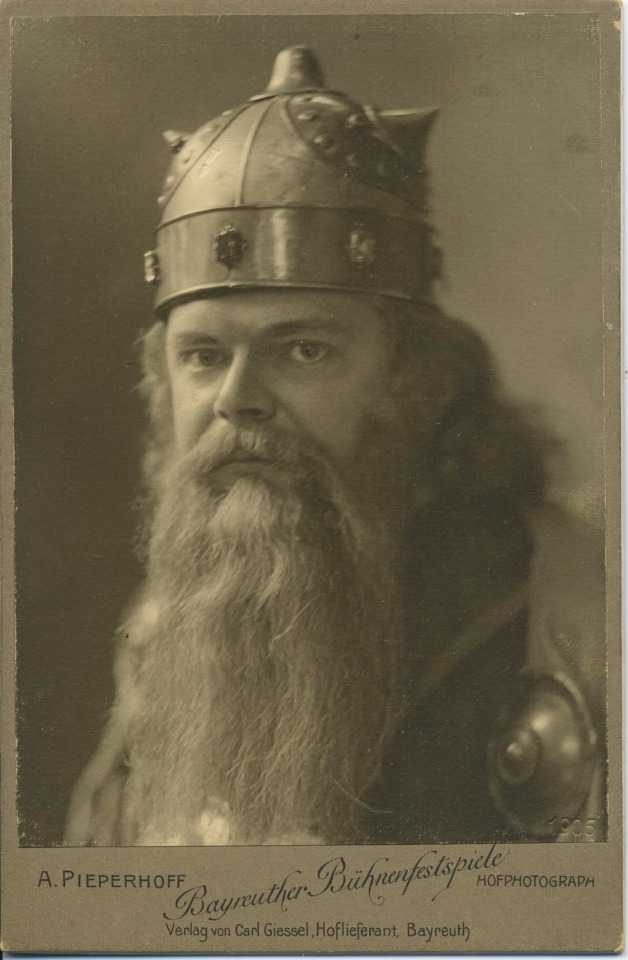

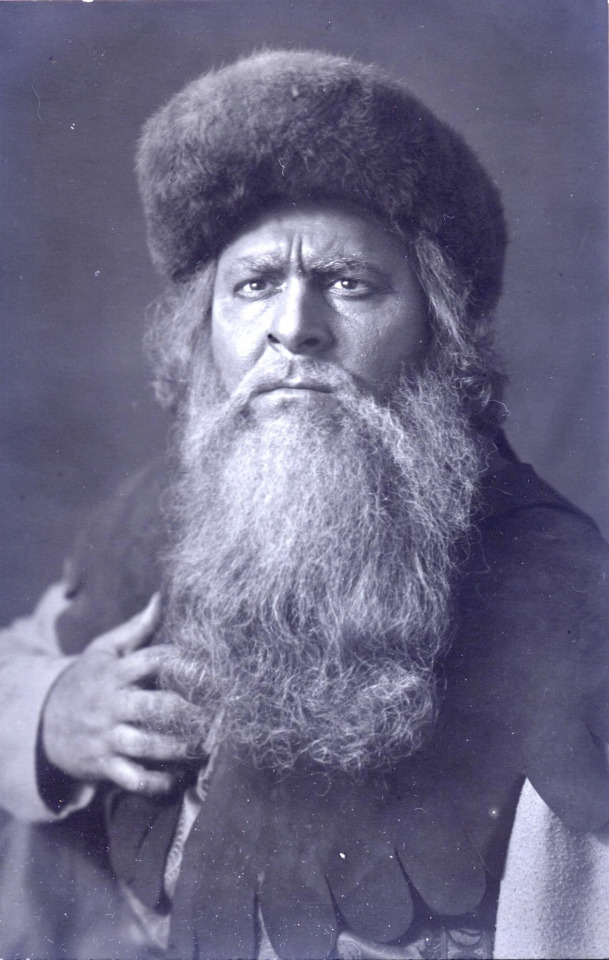


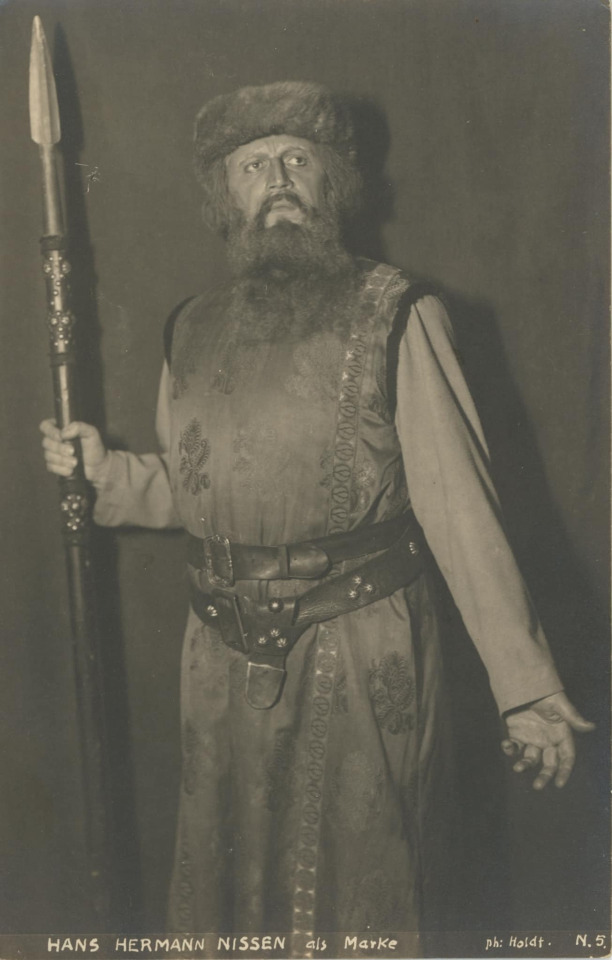
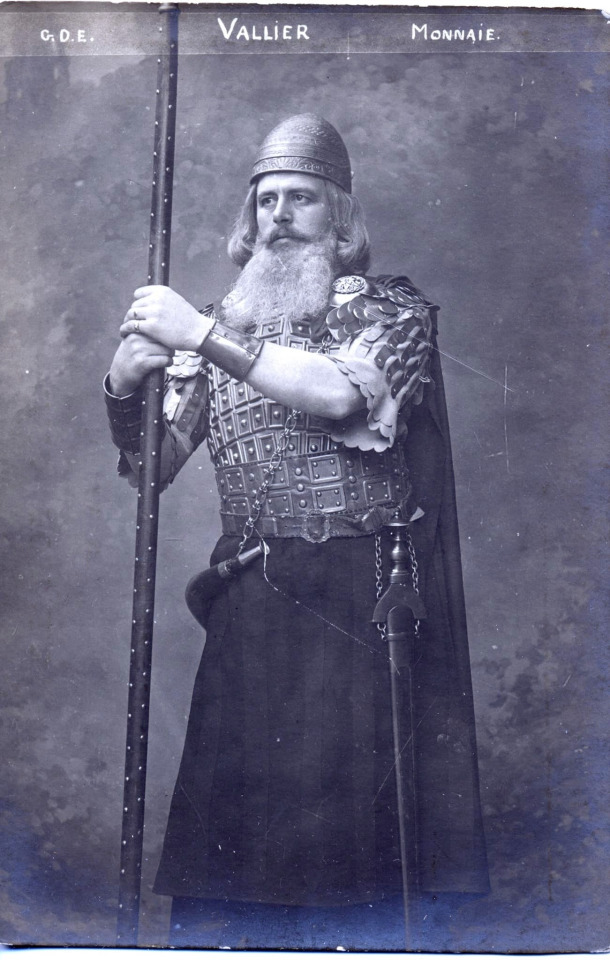

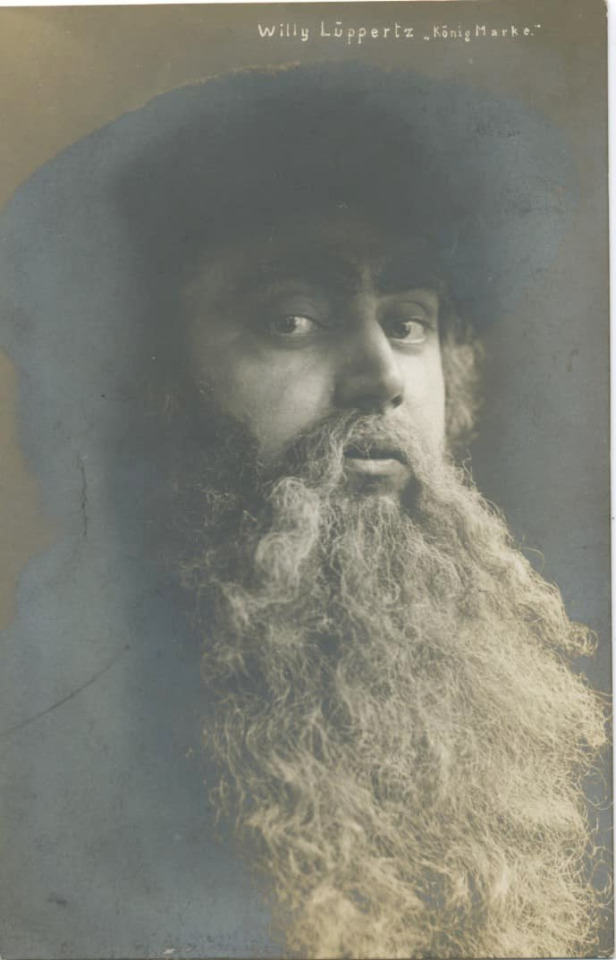

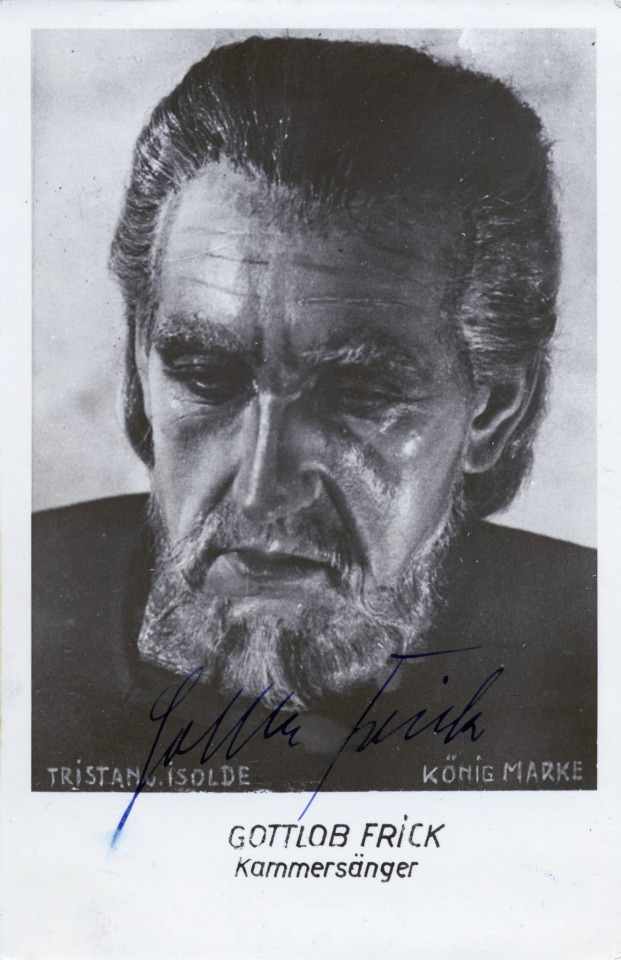
On June 10, 1865, the world premiere of "Tristan and Isolde" by R. Wagner took place in Munich.
„Tot denn alles! Alles tot!“
Here are some of the first basses to have sung the role of King Marke over the years and contributed to the success of this work through their dedication.
Felix von Kraus (October 3, 1870 - October 30, 1937), Austrian dramatic bass.
Paul Bender (28 July 1875 – 25 November 1947), German bass.
Max Gillmann (1874 - 1926), bass.
Theodor Lattermann (1880-1926), German bass-baritone.
Richard Mayr (November 18, 1877 in Henndorf am Wallersee - December 1, 1935 in Vienna), Austrian bass.
Hans Hermann Nissen (May 20, 1893, Danzig - March 28, 1980, Munich), German bass-baritone.
Jean Vallier (? 1863 - Paris 1952), French bass.
Joseph von Manowarda (3 July 1890 in Kraków – 24 December 1942 in Berlin), Austrian bass and Heldenbaritone.
Willy Lüpertz
Alexander Kipnis (February 13 [O.S. February 1] 1891 – May 14, 1978), Russian-born bass.
Gottlob Frick (28 July 1906 in Ölbronn-Dürrn – 18 August 1994 in Muhlacker), German bass.
#opera#classical music#music history#bel canto#composer#classical composer#aria#classical studies#classical#classical musician#classical musicians#classical history#opera history#musicians#musician#classical singing#classical singer#chest voice#maestro#tristan und isolde#tristan and isolde#richard wagner#wagner#historian of music#history#music#opera singer#singing#bass
12 notes
·
View notes
Photo

Famous Old Harrovians:
Born in London on 24 February, 1880, Samuel John Gurney Hoare, 1st Viscount Templewood, GCSI, GBE, CMG, PC, JP (more commonly, Sir Samuel Hoare), was a senior British politician who served in the Conservative and National Governments of the 1920s and 1930s.
As Secretary of State for India, Sir Samuel authored the Government of India Act of 1935, which granted provincial-level self-government to India. Though he is perhaps most famous for serving as Foreign Secretary, when, in 1935, he authored the so-termed Hoare-Laval Pact, thereby partially recognising the Italian conquest of Abyssinia (modern Ethiopia); the ensuing public outcry forcing his resignation.
Sir Samuel, along with Stanley Baldwin (also a fellow Old Harrovian), was seen as a leading 'Appeaser to Hitler'; his removal from office, along with Sir John Simon, and the removal of Neville Chamberlain as Prime Minister, a condition of the Labour Party's agreement to serve in a coalition government in May 1940.
*
A Clash of Harrovians:
Ill feeling between Sam Hoare and Winston Churchill (perhaps the greatest Old Harrovian of all time), reached its peak in April 1934, when Churchill accused him of having, with the aid of the Earl of Derby, breached parliamentary privilege by improperly influencing the Manchester Chamber of Commerce to drop its opposition to the India Bill.
Hoare was exonerated by the Committee on Privileges, though Churchill subsequently gave a powerful speech in the Commons Chamber attacking the committee's findings.
On 13 June, 1934, Leo Amery (also an Old Harrovian), spoke, arguing that Churchill's true aim was to bring down the government under the cover of the doctrine 'fiat justicia ruat caelum' ('may justice be done, though the heavens fall').
Churchill, who was neither a lawyer nor a classicist, growled 'translate it!'
To howls of laughter, Amery replied that it meant 'If I can trip up Sam, the Government's bust!'
Sir Samuel Hoare died in his London home at 7 Eaton Mansions, on 7 May, 1959. He was buried at Sidestrand parish churchyard in Norfolk.
As his marriage was childless and his brother had pre-deceased him, the baronetcy and peerage became extinct upon his death. His widow, Viscountess Templewood, died in 1962.
8 notes
·
View notes
Text

Good morning! I hope you slept well and feel rested? Currently sitting at my desk, in my study, attired only in my blue towelling robe, enjoying my first cuppa of the day.
Welcome to Too Much Information Tuesday.
Lobsters urinate out of their faces.
In the 1930s, the USA printed $100,000 bills.
The average person listens to 25 songs a day.
Obesity is now a bigger killer than malnutrition.
Mild hearing loss between the ages of 40 and 69 triples the risk of falling over.
LiFi is 100 times faster than WiFi and uses light instead of radio frequencies.
Not being able to control your negative thoughts is also a warning sign of depression.
‘Tom and Jerry’ was British slang term in the 1800s, meaning ‘to fight and cause trouble.’
Before sleeping, 90% of your mind begins to imagine stuff you'd like to happen. (So true!!)
The world’s deserts receive enough solar energy in six hours to power the world for a year.
Legalising same sex marriage in the US decreased the number of men enrolling in the Catholic priesthood.
Anhedonia is the word for that feeling when you cannot find joy in the things that usually bring you joy.
Human muscles are limited by our brain. We actually have the strength to move cars and boulders.
During the reign of Edward III (1327-77), the citizens of Norwich had to pay the king 24 herring pies a year.
In ‘Terminator 2’, Schwarzenegger was paid $15 million. It means, for each word he spoke, he earned $21,429!
Not a single engineer survived off the Titanic; they stayed on board to keep the power on so others could escape.
Introversion is strongly associated with creativity and intelligence. 75% of people with IQs over 160 are introverts.
The sons of Hitler's nephew all agreed that they would never marry or have children in order to kill Hitler's bloodline.
80% of people keep their feelings to themselves because they believe it's hard for others to understand their pain.
"They call me ‘stupid’ for smoking marijuana, but they call the creator of the atomic bomb ‘intelligent’." (Bob Marley)
Michael Caine first saw Shakira Beikish on television in a coffee ad back in 1977. They have now been married for over 46 years.
The best friendships tend to be those in which you can be openly weird and/or sarcastic without the other person taking offense.
Depression is the most common disability in women. About 25% of all women will experience severe depression at some point in their lives.
In the Philippines, the common greeting ‘tao po’ is a shortened version of an older phrase that means ‘I am human and not a demon’.
According to a new paper, disco balls can be useful in observing the sun. The authors even suggest that, “every observatory needs a disco ball.”
As some mammals can absorb oxygen through their intestines, scientists are considering the possibility of ‘anal ventilation’ in humans in the future.
Things unique to each person, which could be used for biometric authentication and verification include: fingerprint, voice pattern, iris and retina, toe print, ear, teeth, anus.
USA Today has hired a reporter to write exclusively about Taylor Swift. To prove that he’s capable of being objective, he said that there are three Taylor Swift songs that “he can’t stand.”
On June 21st, 2005, a 12-year-old Ethiopian girl, who had been abducted and beaten by several men, was found being guarded by three lions who apparently had chased off her captors.
In the 1970s, North Korea ordered 1000 Volvos from Sweden in a deal worth $70 million. After delivering the vehicles, North Korea never paid for the cars, resulting in the largest car theft in human history.
A device invented for men in the 1880s set off an alarm if an erection was detected. It was only tried by five men, one of whom quickly gave it up because he got tired of being woken seven times in two hours.
‘Blue zones’ are areas of the world where people live a particularly long time. They have been studied to see what lifestyles may lead to a long and healthy life. However, new evidence suggests they are simply areas with higher levels of clerical errors and pension fraud.
At 3.00 a.m. one night in 1988, Hawaiian singer Israel Kamakawiwo'ole called a local studio and said he needed to record something immediately. He pleaded with the engineer: "Please, can I come in? I have an idea." Kamakawiwo'ole recorded his iconic version of ‘Somewhere Over The Rainbow’ in one take. The song has been used in numerous film soundtracks, including ’50 First Dates’ and is the longest-leading No. 1 hit on any of the Billboard song charts, having spent 358 weeks on top of the World Digital Songs chart.
Okay, that’s enough information for one day. Have a tremendous and tumultuous Tuesday! I love you all.
3 notes
·
View notes
Text
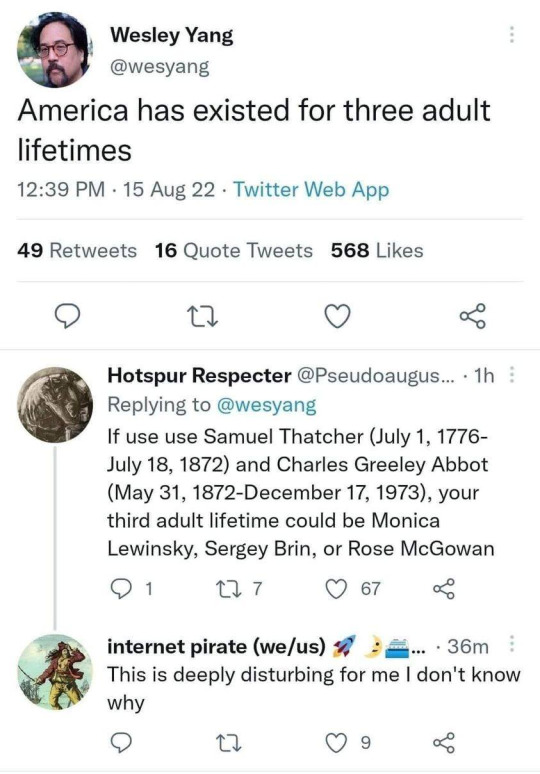
So, it’s actually even more recent than that. The longest-lived person in US history was a woman named Sarah Knauss, who lived from September 24, 1880 to December 30, 1999. When she was born, the US was 104 years old. It’s quite plausible that there would’ve been a few 104-year-olds alive at that point, meaning that the “third adult lifetime” would’ve started at almost the end of the 20th century! Someone born when Sarah Knauss died would only be 22 today!
Frustratingly, I can’t say with certainty that there were any 104-year-olds alive at that time. The 1880 census records do have a breakdown by age, showing the number of infants under 1, 1-year-olds, 2-year-olds, etc., up to 99, but then it has a single category for “100 and over”, listing 4,016 people in the US that year who were 100 or older, so it seems plausible that it included a few people 104+, but we can’t say for certain
If we exclude her, we find a woman named Margaret Skeete who lived from October 27, 1878 to May 7, 1994, or Ettie May Greene, who lived September 8, 1877 - February 26, 1992, both alternate contenders for that “second lifetime” (I used the Wikipedia List of American Supercentenarians for this, ordering the list by death date). Even if there weren’t any 104-year-olds, there would definitely have been 101-year-olds. So at any rate, that third lifetime is almost definitely some time in the 1990s
It’s unlikely to be later than Mrs. Knauss, but not impossible. A woman named Myrtle Dorsey (the 34th longest-lived American) died June 25, 2000, and was born November 22, 1885. It’s not impossible, but is unlikely, that there would’ve been anyone left alive at her birthdate who was alive on 7/4/1776, as they’d have to be 109 years old, a rare age to reach, especially in the 19th century, and then finally Maude-Farris Luse, who lived from January 21, 1887 to March 18, 2002, even less likely to have had someone alive from 7/4/1776 when she was born
30 notes
·
View notes
Photo
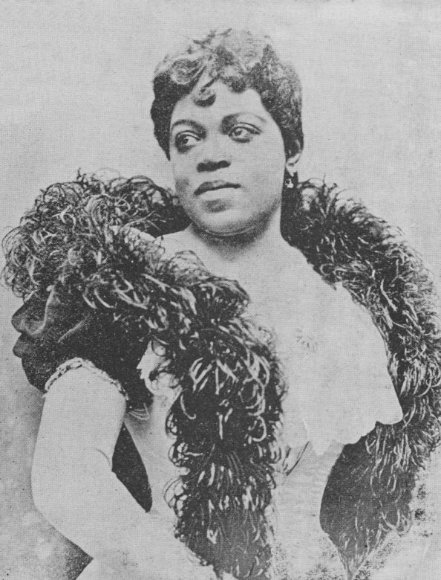

Matilda Sissieretta Joyner Jones, known as Sissieretta Jones, (January 5, 1868 or 1869[1] – June 24, 1933[2]) was an African-American soprano. She sometimes was called “The Black Patti” in reference to Italian opera singerAdelina Patti. Jones’ repertoire included grand opera, light opera, and popular music.[3]
Matilda Sissieretta Joyner was born in Portsmouth, Virginia, United States, to Jeremiah Malachi Joyner, an African Methodist Episcopal minister, and Henrietta Beale.[2] By 1876 her family moved to Providence, Rhode Island,[4]where she began singing at an early age in her father’s Pond Street Baptist Church.[2]
In 1883, Joyner began the formal study of music at the Providence Academy of Music. The same year she married David Richard Jones, a news dealer and hotel bellman. In the late 1880s, Jones was accepted at the New England Conservatory of Music.[1] On October 29, 1885, Jones gave a solo performance in Providence as an opening act to a production of Richard IIIput on by John A. Arneaux‘s theatre troupe.[5] In 1887, she performed at Boston’s Music Hall before an audience of 5,000.[2]
Jones made her New York debut on April 5, 1888, at Steinway Hall.[1] During a performance at Wallack’s Theater in New York, Jones came to the attention of Adelina Patti’s manager, who recommended that Jones tour the West Indies with the Fisk Jubilee Singers.[2] Jones made successful tours of the Caribbean in 1888 and 1892.[1]
In February 1892, Jones performed at the White House for PresidentBenjamin Harrison.[2] She eventually sang for four consecutive presidents — Harrison, Grover Cleveland, William McKinley, and Theodore Roosevelt— and the British royal family.[1][2][3]
Jones performed at the Grand Negro Jubilee at New York’s Madison Square Garden in April 1892 before an audience of 75,000. She sang the song “Swanee River” and selections from La traviata.[3] She was so popular that she was invited to perform at the Pittsburgh Exposition (1892) and the World’s Columbian Exposition in Chicago (1893).[4]
In June 1892, Jones became the first African-American to sing at the Music Hall in New York (renamed Carnegie Hall the following year).[1][7] Among the selections in her program were Charles Gounod‘s “Ave Maria” and Giuseppe Verdi‘s “Sempre libera” (from La traviata).[1] The New York Echowrote of her performance at the Music Hall: “If Mme Jones is not the equal of Adelina Patti, she at least can come nearer it than anything the American public has heard. Her notes are as clear as a mockingbird’s and her annunciation perfect.”[1] On June 8, 1892, her career elevated beyond primary ethnic communities, and was furthered when she received a contract, with the possibility of a two-year extension, for $150 per week (plus expenses) with Mayor James B. Pond, who had meaningful affiliations to many authors and musicians.[8] The company Troubadours made an important statement about the capabilities of black performers, that besides minstrelsy, there were other areas of genre and style.[8]
In 1893, Jones met composer Antonín Dvořák, and in January 1894 she performed parts of his Symphony No. 9 at Madison Square Garden. Dvořák wrote a solo part for Jones.[1]
Jones met with international success. Besides the United States and the West Indies, Jones toured in South America, Australia, India, and southern Africa.[1] During a European tour in 1895 and 1896, Jones performed in London, Paris, Berlin, Cologne, Munich, Milan, and Saint Petersburg.[9]
In 1896, Jones returned to Providence to care for her mother, who had become ill.[1] Jones found that access to most American classical concert halls was limited by racism. She formed the Black Patti Troubadours (later renamed the Black Patti Musical Comedy Company), a musical and acrobatic act made up of 40 jugglers, comedians, dancers and a chorus of 40 trained singers.[2] The Indianapolis Freeman reviewed the “Black Patti Troubadours” with the following: “The rendition which she and the entire company give of this reportorial opera selection is said to be incomparably grand. Not only is the solo singing of the highest order, but the choruses are rendered with a spirit and musical finish which never fail to excite genuine enthusiasm.[10]
The revue paired Jones with rising vaudeville composers Bob Cole and Billy Johnson. The show consisted of a musical skit, followed by a series of short songs and acrobatic performances. During the final third of each show, Jones performed arias and operatic excerpts.[9] The revue provided Jones with a comfortable income, reportedly in excess of $20,000 per year. She led the company with reassurance of a forty-week season that would give her a sustainable income, guaranteed lodging in a well-appointed and stylish Pullman car, and the ability to sing opera and operetta excerpts in the final section of the show.[8] This allowed Jones to be the highest paid African American performer of her time.[8] Jones sung passionately and pursued her career choice of opera and different repertory regardless to her lack of audience attendance.[8] For more than two decades, Jones remained the star of the Famous Troubadours, while they graciously toured every season and established their popularity in the principal cities of the United States and Canada.[11] Although their eventual fame and international tours collected many audiences, they began with a “free-for-all” variety production with plenty of “low” comedy, song and dance, and no pretense of a coherent story line.[12]
Several members of the troupe, such as Bert Williams, went on to become famous.[1] April 1908, at the Avenue Theatre in Louisville, Kentucky, an audience made up mostly of whites (segregated seating was still prevalent), accepted Madam ‘Patti’ after singing ‘My Old Kentucky Home’ with much respect and admiration, and marked “the first time that a colored performer received a bouquet at the theatre in this city”.[12] For almost ten years, racial segregation had kept Jones from the mainstream opera platform, but by singing selections from operas within the context of a hard-traveling minstrel and variety show, she was still able to utilize her gifted voice, that people of all races loved.[12] The Black Patti Troubadours reveled in vernacular music and dance.[12]
Jones retired from performing in 1915 because her mother fell ill, so she moved back to Rhode Island to take care of her. For more than two decades, Jones remained the star of the Famous Troubadours, while they graciously toured every season and established their popularity in the principal cities of the United States and Canada.[12] She devoted the remainder of her life to her church and to caring for her mother. Jones was forced to sell most of her property to survive.[1][2] She died in poverty on June 24, 1933 from cancer. She is buried in her hometown at Grace Church Cemetery.[2]
In 2013 Jones was inducted into the Rhode Island Music Hall of Fame.[13]
Source: https://en.wikipedia.org/wiki/Matilda_Sissieretta_Joyner_Jones
Photos from Wiki Commons
#sissieretta black patti jones#blackherstory#black womens history#lightopera#popularmusic#grandopera
11 notes
·
View notes
Text
Saints&Reading: Thursday, February 16, 2023
february 16_february 3
HOLY EQUAL-TO-THE-APOSTLES NIKOLAI, ARCHBISHOP, APOSTLE TO JAPAN (1912)
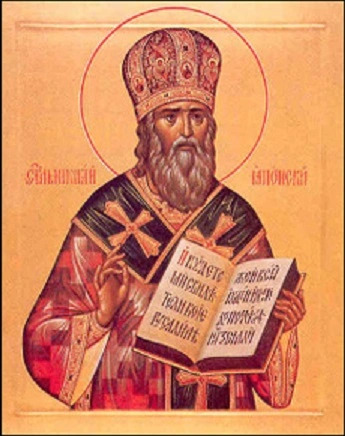
Saint Nicholas, Enlightener of Japan, was born Ivan Dimitrievich Kasatkin on August 1, 1836, in the village of Berezovsk, Belsk district, Smolensk diocese, where his father served as a deacon. At the age of five, he lost his mother. He completed the Belsk religious school, and afterward the Smolensk Theological Seminary. In 1857 Ivan Kasatkin entered the Saint Petersburg Theological Academy. On June 24, 1860, in the academy temple of the Twelve Apostles, Bishop Nectarius tonsured him with the name Nicholas.
On June 29, the Feast of the foremost Apostles Peter and Paul, the monk Nicholas was ordained deacon. The next day, on the altar feast of the academy church, he was ordained to the holy priesthood. Later, at his request, Father Nicholas was assigned to Japan as head of the consular church in the city of Hakodate.
At first, preaching the Gospel in Japan seemed completely impossible. In Father Nicholas’s own words: “the Japanese of the time looked upon foreigners as beasts, and on Christianity as a villainous sect, to which only villains and sorcerers could belong.” He spent eight years in studying the country, the language, manners and customs of the people among whom he would preach.
In 1868, the flock of Father Nicholas numbered about twenty Japanese. At the end of 1869, Hieromonk Nicholas reported in person to the Synod in Petersburg about his work. A decision was made, on January 14, 1870, to form a special Russian Spiritual Mission for preaching the Word of God among the pagan Japanese. Father Nicholas was elevated to the rank of archimandrite and appointed as head of this Mission.
Returning to Japan after two years in Russia, he transferred some of the responsibility for the Hakodate flock to Hieromonk Anatolius and began his missionary work in Tokyo. In 1871 there was a persecution of Christians in Hakodate. Many were arrested (among them, the first Japanese Orthodox priest Paul Sawabe). Only in 1873 did the persecution abate somewhat, and the free preaching of Christianity became possible.
In this year Archimandrite Nicholas began the construction of a stone building in Tokyo which housed a church, a school for fifty men, and later a religious school, which became a seminary in 1878.
In 1874, Bishop Paul of Kamchatka arrived in Tokyo to ordain as priests several Japanese candidates recommended by Archimandrite Nicholas. At the Tokyo Mission, there were four schools: catechists, for women, church servers, and seminary. At Hakodate, there were two separate schools for boys and girls.
In the second half of 1877, the Mission began regular publication in the journal “Church Herald.” By the year 1878, there were already 4115 Christians in Japan, and there were a number of Christian communities. Church services and classes in Japanese and the publication of religious and moral books permitted the Mission to attain such results quickly. Archimandrite Nicholas petitioned the Holy Synod in December of 1878 to provide a bishop for Japan.

Archimandrite Nicholas was consecrated bishop on March 30, 1880, in the Trinity Cathedral of Alexander Nevsky Lavra. Returning to Japan, he resumed his apostolic work with increased fervor. He completed construction on the Cathedral of the Resurrection of Christ in Tokyo, translated the service books, and compiled a special Orthodox theological dictionary in the Japanese language.
Great hardship befell the saint and his flock during the Russo-Japanese War. For his ascetic labor during these difficult years, he was elevated to the rank of Archbishop.
In 1911, half a century had passed since the young hieromonk Nicholas had first set foot on Japanese soil. At that time there were 33,017 Christians in 266 communities of the Japanese Orthodox Church, including 1 Archbishop, 1 bishop, 35 priests, 6 deacons, 14 singing instructors, and 116 catechists.
On February 3, 1912, Archbishop Nicholas departed peacefully to the Lord at the age of seventy-six. The Holy Synod of the Russian Orthodox Church glorified him on April 10, 1970, since the saint had long been honored in Japan as a righteous man, and a prayerful intercessor before the Lord.
PROPHET AZARIAH (10TH C.B.C.)
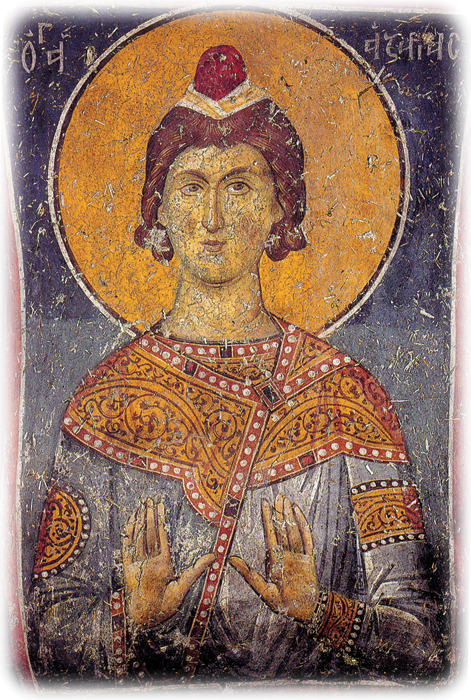
He lived and prophesied in the tenth century B.C., during the reign of Asa, King of Judea. He predicted the help of God to this king for his piety and troubles, which must overtake the Judeans because of their sins. (2 Chronicles 15). The Spirit of God is described as coming upon him (verse 1), and he goes to meet King Asa of Judah to exhort him to carry out a work of reform. In response to Azariah's encouragement, Asa carried out a number of reforms including the destruction of idols and repairs to the altar of Yahweh in the Jerusalem Temple complex. The Bible records that a period of peace followed the carrying out of these reforms (verse 19).
Azariah is described as being the "son of Oded" (verse 1), but the Masoretic Text omits Azariah's name in verse 8, suggesting that the prophecy is from Oded himself
Source: Orthodox Churh in America

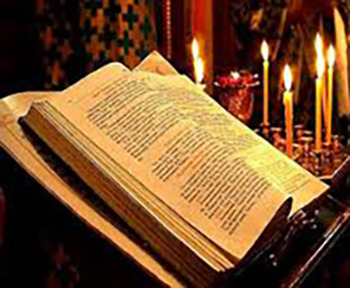
MARK 15:1-15
1Immediately, in the morning, the chief priests held a consultation with the elders and scribes and the whole council; and they bound Jesus, led Him away, and delivered Him to Pilate. 2 Then Pilate asked Him, "Are You the King of the Jews?" He answered and said to him, "It is as you say."3 And the chief priests accused Him of many things, but He answered nothing.4 Then Pilate asked Him again, saying, "Do You answer nothing? See how many things they testify against You!" 5 But Jesus still answered nothing, so Pilate marveled. 6 Now at the feast he was accustomed to releasing one prisoner to them, whomever they requested. 7 And there was one named Barabbas, who was chained with his fellow rebels; they had committed murder in the rebellion. 8 Then the multitude, crying aloud, began to ask him to do just as he had always done for them. 9 But Pilate answered them, saying, "Do you want me to release to you the King of the Jews?" 10 For he knew that the chief priests had handed Him over because of envy. 11 But the chief priests stirred up the crowd so that he should rather release Barabbas to them. 12 Pilate answered and said to them again, "What then do you want me to do with Him whom you call the King of the Jews?" 13 So they cried out again, "Crucify Him!" 14 Then Pilate said to them, "Why, what evil has He done?" But they cried out all the more, "Crucify Him!" 15 So Pilate, wanting to gratify the crowd, released Barabbas to them; and he delivered Jesus after he had scourged Him, to be crucified.
JOHN 4:20-5:21
20 If someone says, "I love God," and hates his brother, he is a liar; for he who does not love his brother whom he has seen, how can he love God whom he has not seen? 21 And this commandment we have from Him: that he who loves God must love his brother also.
1 Whoever believes that Jesus is the Christ is born of God, and everyone who loves Him who begot also loves him who is begotten of Him. 2 By this we know that we love the children of God, when we love God and keep His commandments. 3 For this is the love of God, that we keep His commandments. And His commandments are not burdensome. 4 For whatever is born of God overcomes the world. And this is the victory that has overcome the world our faith. 5 Who is he who overcomes the world, but he who believes that Jesus is the Son of God? 6 This is He who came by water and blood-Jesus Christ; not only by water but by water and blood. And it is the Spirit who bears witness because the Spirit is truth. 7 For there are three that bear witness in heaven: the Father, the Word, and the Holy Spirit; and these three are one. 8 And there are three that bear witness on earth: the Spirit, the water, and the blood; and these three agree as one.9 If we receive the witness of men, the witness of God is greater; for this is the witness of God which He has testified of His Son. 10 He who believes in the Son of God has the witness in himself; he who does not believe God has made Him a liar because he has not believed the testimony that God has given of His Son. 11 And this is the testimony: that God has given us eternal life, and this life is in His Son. 12 He who has the Son has life; he who does not have the Son of God does not have life. 13 These things I have written to you who believe in the name of the Son of God, that you may know that you have eternal life and that you may continue to believe in the name of the Son of God. 14 Now this is the confidence that we have in Him, that if we ask anything according to His will, He hears us. 15 And if we know that He hears us, whatever we ask, we know that we have the petitions that we have asked of Him. 16 If anyone sees his brother sinning a sin which does not lead to death, he will ask, and He will give him life for those who commit sin not leading to death. There is sin leading to death. I do not say that he should pray about that. 17 All unrighteousness is sin, and there is a sin not leading to death. 18 We know that whoever is born of God does not sin; but he who has been born of God keeps himself, and the wicked one does not touch him. 19 We know that we are of God, and the whole world lies under the sway of the wicked one. 20 And we know that the Son of God has come and has given us an understanding, that we may know Him who is true; and we are in Him who is true, in His Son Jesus Christ. This is the true God and eternal life.21
Little children, keep yourselves from idols. Amen.
#orthodoxy#orthodoxchristianity#easternorthodoxchurch#originofchristianity#spirituality#holyscriptures#bible#gospel#wisdom
6 notes
·
View notes
Text
You know, what makes the prison disappear is every deep, serious attachment. To be friends, to be brothers, to love; that opens the prison through sovereign power, through a most powerful spell. But he who doesn’t have that remains in death. But where sympathy springs up again, life springs up again.
Vincent van Gogh, Letter to Theo, 22-24 June 1880
Sai, ciò che fa scomparire la prigione è ogni attaccamento profondo e serio. Essere amici, essere fratelli, amare; ciò apre la prigione col suo sommo potere, col più potente incantesimo. Ma chi non l'ha rimane nella morte. Mentre dove rinasce la comprensione, rinasce la vita. V.v.G.
3 notes
·
View notes
Text

The Last Words of 30 Famous Serial Killers
Some killers have offered sincere apologies for the heinous offenses they committed. Others’ final words were filled with anger and resentment, while some seemed indifferent. A few of the most interesting final words are quizzically strange rantings.
What are the last words of some of the most famous serial slayers? The last words on this list come from the mouths of some of the most heinous, dangerous people in human history.
James French
“Hey, fellas! How about this for a headline for tomorrow’s paper? ‘French Fries.‘” (August 10, 1966)
James French has the distinction of being the last person to be executed in Oklahoma, via electric chair
Carl Panzram
“Hurry up, you Hoosier bastard. I could kill 10 men while you’re fooling around.” (September 5, 1930)
Peter Kurten
“Tell me. After my head has been chopped off, will I still be able to hear, at least for a moment, the sound of my own blood gushing from the stump of my neck? That would be a pleasure to end all pleasures.” (July 2, 1931)
Peter Kurten, AKA “The Vampire of Dusseldorf,” drank the blood of at least one person.
John Wayne Gacy
Kiss My Ass (May 10, 1994)
Thomas J. Grasso
“I did not get my Spaghetti O’s. I got spaghetti. I want the press to know this.” (March 20, 1995)
Tom Ketchum
“I’ll be in Hell before you start breakfast, boys. Let her rip.” (April 26, 1901)
Jeffery Dahmer
“I don’t care if I live or die. Go ahead and kill me.” (Novemer 28, 1994)
H.H. Holmes
“Take your time. Don’t bungle it.” (May 7, 1896)
Dr. H.H. Holmes was one of the first American serial killers.
Albert Fish
“I don’t even know why I’m here.” (January 16, 1936)
In the 1920s, Albert Fish claimed that he had slain at least 100 children.
Ted Bundy
“I’d like you to give my love to my family and friends.” (January 24, 1989)
The exact number of women Ted Bundy offed or hurt in the 1970s is unknown, but some say the number is somewhere in the 100s.
Marcel Petiot
“Gentleman, I have one last piece of advice: Look away. This will not be pretty to see.” (May 25, 1946)
Petiot was a French doctor who was only found out when the remains of 23 people were found in his Parisian home during WW2.
Steven Timothy Judy
“I don’t hold any grudges. This is my doing. Sorry it happened.” (March 9, 1981)
Steven Judy slayed a woman and her three children in 1979.
William Bonin
“I would suggest that when a person has a thought of doing anything serious against the law, that before they did that they should go to a quiet place and think about it seriously.” (February 23, 1996)
William Bonin’s habit of dumping cadavers near freeways earned him the nickname Freeway Killer.
Amelia Dyer
“I have nothing to say.” (June 10, 1896)
Dyer is believed to have slain 400 children during a 20-year period in Victorian England.
Peter Manuel
“Turn up the radio and I’ll go quietly.” (July 11, 1958)
Manuel was an American-born Scottish man who is believed to have slain from nine to 18 people during the 1950s.
Francis Crowley
“You sons of bitches. Give love to Mother.” (January 21, 1932)
Francis Crowley went on a three-month spree that ended when he was sent to the electric chair.
Angel Maturino Resendiz
“I want to ask if it is in your heart to forgive me. You don’t have to. I know I allowed the Devil to rule my life. I just ask you to forgive me and ask the Lord to forgive me for allowing the devil to deceive me. I thank God for having patience in me. I don’t deserve to cause you pain. You do not deserve this. I deserve what I am getting.” (June 27, 2006)
Reséndiz left people’s cadavers near railroad tracks.
Fritz Haarmann
“I repent, but I do not fear death.” (April 15, 1925)
Fritz Haarmann of Germany, active in the years following WWI, became known as the Vampire of Hanover because he would bite through people’s throats.
Ned Kelly
“Such is life.” (November 11, 1880)
Ned Kelly was often considered a folk hero in Australia.
Donald Henry Gaskins
“I’ll let my lawyers talk for me. I’m ready to go.” (September 6, 1991)
Donald Henry Gaskins was known as the Meanest Man in America for slaying at least 100 people, most of them hitchhikers, from the 1950s to the 1980s.
Israel Keyes
“Okay, talk is over, words are placid and weak. Back it with action or it all comes off cheap. Watch close while I work now, feel the electric shock of my touch, open your trembling flower, or your petals I’ll crush.” (December 2, 2012)
Israel Keyes took his own life; the words are from his final note.
John George Haigh
In a letter to his girlfriend, Barbara: “It is difficult to say farewell under these circumstances, but you will understand that you will always be in my thoughts. You know I have been proud of our association: it has always been an honourable one. I shall remember your great kindness and devotion. Now I must leave you.” (August 10, 1949)
In the 1940s, John George Haigh dissolved six women’s cadavers in acid.
Kenneth McDuff
“I am ready to be released. Release me.” (November 17, 1998)
After his sentence was commuted in 1989, Kenneth McDuff killed again before being detained in 1992.
Carroll Cole
“It’s all right.” (December 6, 1985)
Carroll Cole possibly committed acts of cannibalism
Raymond Fernandez and Martha Beck
“I wanna shout it out; I love Martha! What do the public know about love?” – Raymond Fernandez (March 8, 1951)
“My story is a love story. But only those tortured by love can know what I mean […] Imprisonment in the Death House has only strengthened my feeling for Raymond….” – Martha Beck (March 8, 1951)
In the 1940s, Fernandez and Beck would place personal ads in newspapers with the intent of taking money from the women who replied.
Aileen Wuornos
“I’d just like to say I’m sailing with the rock, and I’ll be back like Independence Day, with Jesus, June 6th. Like the movie, big mother ship and all. I’ll be back.” (October 9, 2002)
From 1989 to 1990, Aileen Wuornos terminated seven men, with the excuse that each of them tried to rape her.
James Allen Red Dog
“I’m going home, babe.” (October 9, 2002)
James Allen Red Dog had been connected to at least five murders
Myra Hindley
According to the Catholic priest who gave Hindley last rites, “The last conversation she had before she died concerned her mother. She just expressed concern for her mother – but I will not say exactly what she said.” (November 15, 2002)
Hindley, with her lover Ian Brady, shocked 1960s England when they killed five children.
Earle Nelson
“I am innocent. I stand innocent before God and man. I forgive those who have wronged me and ask forgiveness of those I have injured. God have mercy!” (January 13, 1928)
During a two-year period in the mid-1920s, Earle Nelson felled 22 women, most of whom were landladies he approached about rooms they wanted to rent.
Sean Flanagan
“I love you.”
Sean Flanagan terminated two gay men in Nevada, claiming he was doing “good for… society.” (June 23, 1989)
#Last Words#Killers#paranormal#ghost and hauntings#haunted locations#ghost and spirits#myhauntedsalem#haunted salem
22 notes
·
View notes
Photo




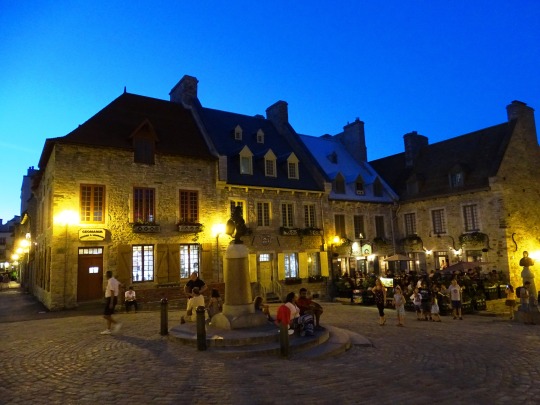





“O Canada”, today the national anthem of Canada, was first performed in Quebec City, during a Saint-Jean-Baptiste Day banquet on June 24, 1880.
#O Canada#national anthem of Canada#first performed#Quebec City#travel#Maple Leaf Flag#Flag of Canada#24 June 1880#anniversary#Canadian history#Québec#original photography#vacation#tourist attraction#cityscape#architecture#Peace Tower#Ottawa#Ontario#Maison Jean-Baptiste-Chevalier#Batterie Royale#Place Royale#basse ville#lower town#Saint-Jean-Baptiste Day#summer 2018#Old Quebec#Historic District of Old Quebec
0 notes
Photo
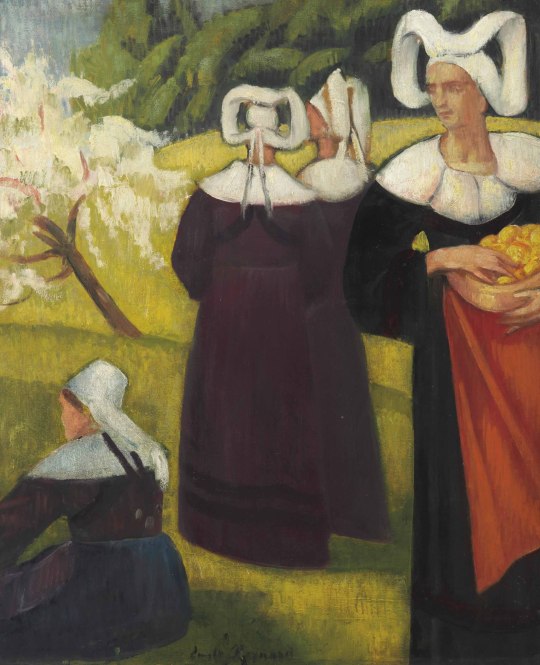
Émile Bernard, Cueilleuses de pommes à Pont-Aven, 1888, oil on canvas, 75.5 x 61.5 cm.
“Cueilleuses de pommes à Pont-Aven epitomizes Bernard's work of the late 1880s when he was at the apex of his engagement with the most advanced currents in French painting. He was still in his teens and a student at Cormon’s atelier libre in Paris, when in 1887, he and his classmate Louis Anquetin developed the radical pictorial style known as Cloisonism. The young critic Edouard Dujardin coined the term in an article about Anquetin published in the 1 March 1888 issue of La Revue Indpéndante—it referred to the medieval technique of firing ground colored glass in a metal framework that outlined the design. Dujardin noted similarities to the methods of Japanese woodblock print-making, and old French popular woodcuts known as images d’epinal, in which “the artists first trace lines within which are placed colours according to the colour-pattern process” (quoted in B. Welsh Ocharov, Vincent van Gogh and the Birth of Cloisonism, exh. cat., Art Gallery of Ontario, Toronto, 1981, p. 24).
Bernard was upset that Dujardin had given Anquetin full credit for this new development without mentioning his own contribution. Bernard maintained that he had arrived at Cloisonism through his study of Japanese prints. Vincent van Gogh, who had known Bernard in Cormon's atelier and was then painting in Arles, noted in a June 1888 letter to his brother Theo that "in the Japanese style young Bernard has perhaps gone further than Anquetin" (LT 500). It was on the recommendation of van Gogh that Paul Gauguin agreed to welcome Bernard in Pont-Aven, the site of the present work, when the young painter traveled there with his mother and sister Madeleine in August 1888. Gauguin initially met Bernard in September 1886, during Bernard's first trip to Brittany, when the aspiring teenaged artist toured the region on foot. At that time, Bernard had carried a letter of introduction from Gauguin's close friend Claude-Emile Schuffenecker, but Gauguin had received him guardedly. This time, however, the two artists got on well. They were now both working toward similar goals and enthusiastically exchanged their ideas. Moreover, Gauguin was attracted to Bernard's sister, who later became engaged to Charles Laval, the painter who had accompanied Gauguin to Martinique in 1886, and who was also in Pont-Aven during 1888. Nancy Mowll Mathews has written, "Gauguin was energized by Bernard’s forceful rejection of the old tenets of naturalism and his desire to found an art based on completely new principles, which Bernard wanted to call pictorial symbolism. Gauguin had preached the same message himself. But even though Bernard was mostly confirming ideas that Gauguin already held, it is surprising how swiftly Gauguin assimilated Bernard's new verbal and pictorial language. A new force had definitely taken hold of the old P Go" (Paul Gauguin, An Erotic Life, New Haven, 2001, pp. 107-108).
The results of these discussions soon became manifest in the work of both painters. In September 1888, Gauguin painted La vision après le sermon (Wildenstein, no. 308), while Bernard during this time completed Cueilleuses de pommes à Pont-Aven, which share outlined forms and even application of color. While Bernard's guiding interests in this painting (and related prints of the period) were largely formal, using radically flat color forms from which even shadows have been removed, there is nonetheless an accompanying symbolism in the autumn apple harvest (used to make the cheap hard cider the artists liked to drink) as a reference to Eve in the Garden of Eden.
On the strength of these striking efforts, Gauguin exhorted Bernard to press forward. In a letter to his young friend dated October 1888, Gauguin wrote, "You hold all the trumps in your hand. With foot in stirrup betimes, you will arrive fully armed and in all the vigour of youth at the moment when the blocked road has been cleared in great part. You are extraordinarily gifted, and painting now, you will undoubtedly arrive" (quoted in M. Malingue, ed., Paul Gauguin, Letters to his Wife and Friends, Boston, 2003, p. 101).”
4 notes
·
View notes
Text
References
Adams, C. W., George Sarton, and James R. Ware. “Queries and Answers.” Isis 37, no. 1/2 (1947): 68–73. http://www.jstor.org/stable/226165.
Britannica, T. Editors of Encyclopaedia. "Lop Nur." Encyclopedia Britannica, December 25, 2023. https://www.britannica.com/place/Lop-Nur.
Britannica, T. Editors of Encyclopaedia. "Hotan." Encyclopedia Britannica, July 28, 2010. https://www.britannica.com/place/Hotan.
Britannica, T. Editors of Encyclopaedia. "Yarkand." Encyclopedia Britannica, September 24, 2013. https://www.britannica.com/place/Yarkand.
Cartwright, Mark. "Marco Polo." World History Encyclopedia. Last modified February 12, 2019. https://www.worldhistory.org/Marco_Polo/.
Cartwright, Mark. "Xanadu." World History Encyclopedia. Last modified September 18, 2019. https://www.worldhistory.org/Xanadu/.
Encyclopædia Britannica. “Hotan.” Image. March 20, 2024. https://cdn.britannica.com/62/129262-050-2830713C/Ruins-monastery-Melikawat-Hotan-China-Uygur-Autonomous.jpg
Huntington, Ellsworth. “Lop-Nor. A Chinese Lake. Part I. The Unexplored Salt Desert of Lop.” Bulletin of the American Geographical Society 39, no. 2 (1907): 65–77. https://doi.org/10.2307/198379.
Hartmann, Sabine. “The Wild West of China: Yarkant, Taklamakan Desert, and Camel Riding.” YouTube, uploaded by Sabine Hartmann, 20 Mar. 2024, https://youtu.be/KbmCCQJlF9I?si=UHuCC1EkW9L3IdI3.
Haw, Stephen G. Marco Polo’s China: A Venetian in the Realm of Khubilai Khan. 1st ed. London: Routledge, 2019. DOI: 10.4324/9780203606902.
History.com Editors. “Kublai Khan Image” HISTORY. A&E Television Networks, June 10, 2019. Originally published November 9, 2009. https://assets.editorial.aetnd.com/uploads/2009/11/gettyimages-51242295.jpg?width=1920&height=960&crop=1920%3A960%2Csmart&quality=75&auto=webp
Masefield, John. Introduction to Marco Polo’s Silk Road: The Art of the Journey: An Italian at the Court of Kublai Khan. Watkins Publishing, 2011, London. Marco Polo's Silk Road: the art of the journey, an Italian at the court of the Kublai Khan: Polo, Marco, 1254–1323? Free Download, Borrow, and Streaming: Internet Archive
National Geographic. “The Silk Road Map” January 9, 2024. Web. the-silk-road-map.jpg (4486×3594) (nationalgeographic.org)
Ogata, N. Research Trip in the Tarim Basin, “Qiemo image”. Xinjiang, China. 2005. http://kyotohumanities.jp/ogata/xinjiang2005/Cherchen_11.jpg
Pietranera, Luca. “The Wandering Lake: Image of the Day.” NASA, Telespazio, Rome, Italy, based on data from the MODIS Science Team. 2001. The Wandering Lake: Image of the Day: NASA -- Caption and image courtesy Luca Pietranera, www.telespazio.it/ Telespazio, Rome, Italy, based on data from the modarch.gsfc.nasa.gov/ MODIS Science Team: Free Download, Borrow, and Streaming: Internet Archive
Rossabi, Morris. “The Early Mongols.” In Khubilai Khan: His Life and Times, 20th Anniversary Edition, With a New Preface, 1st ed., 1–21. University of California Press, 2009. http://www.jstor.org/stable/10.1525/j.ctv1xxz30.7.
Rodriguez, Jonathan. “Qiemo.” Central Asia Sites, 21 May 2017. » Qiemo Central Asia Sites (vassar.edu)
Sparavigna, Amelia Carolina. “From Kashgar to Xanadu in the Travels of Marco Polo.” Zenodo. 2020 DOI: 10.5281/zenodo.3759380. (PDF) From Kashgar to Xanadu in the Travels of Marco Polo (researchgate.net)
SY. "Map of Marco Polo's Travels." World History Encyclopedia. Last modified February 11, 2019. https://www.worldhistory.org/image/10041/map-of-marco-polos-travels/.
Towle, George M. Marco Polo: His Travels and Adventures. Boston: Lee and Shepard Publishers; New York: Charles T. Dillingham, 1880. Marco Polo: His Travels and Adventures - AmblesideOnline - Charlotte Mason Curriculum
Rong Xinjiang, 榮新江. “Reality or Tale? Marco Polo’s Description of Khotan.” Journal of Asian History 49, no. 1 - 2. 2015. https://doi.org/10.13173/jasiahist.49.1-2.0161.
Yarkant County (Kashar). Travel guide: Tours, travel tips, attractions. “Yarkant image.” 2017 https://www.chinadragontours.com/wp-content/uploads/2017/10/Yarkent-05.jpg
0 notes
Text
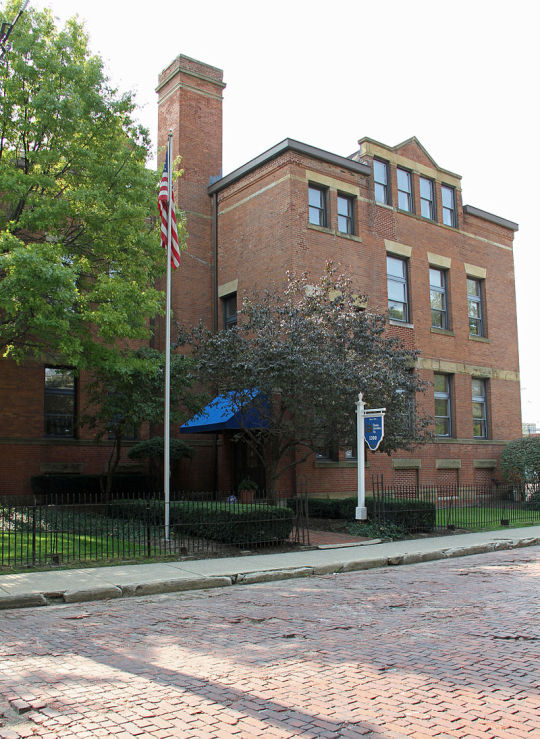
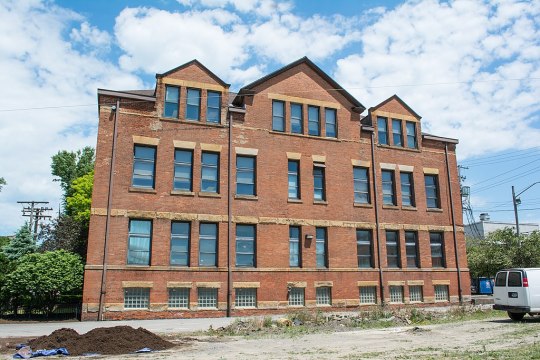
Brownell School and Annex
1300-1360 Sumner St.
Cleveland, OH
The Brownell School and Annex are three historic former public school buildings located on Sumner Street in Cleveland, Ohio. On July 30, 1850, the city of Cleveland purchased for $600 lot number 10 on Clinton Street (later known as Brownell Street, and still later as E. 14th Street). This 100-by-198-foot (known today as 2261 E. 14th Street) was purchased for the purpose of erecting a public school. Construction of a 44-by-46-foot, two-story brick structure began in the fall of 1851. Local builder John Gill constructed the school at a cost of $3,500. The school opened in January 1852. The Clinton School, as it was originally known, proved immensely popular with area residents. It became so overcrowded after just a single semester that in July 1852 the school board ordered that a third floor be added to the structure. This was built by Josiah Chase during the summer, at a cost of $175. A 24-by-60-foot, one-story wooden addition was added in 1856, again to alleviate overcrowding.
In May 1863, the Cleveland Board of Education determined that a new, larger school was needed to replace the 1851 structure. The city purchased lots 17, 18, and 19 on the southern corner of the intersection of Sumner Street and Brownell Avenue in September 1863. Noted local architect Simeon Porter designed the structure. With the American Civil War proving a drain on city finances, it was not until August 1864 that local builder Levi Aust was given a contract to build the new school. The 25-room brick grammar school, was completed in May 1865. It was named the Brownell Street School. The original school and its addition were demolished in 1865, and the original lot sold.
By at least 1874, the structure's name had been shortened to "Brownell School." With Cleveland's population rising rapidly, the Brownell School once more became overcrowded. Six temporary buildings had been moved onto the Brownell Street School lot or erected there by 1880, and two rooms rented in a nearby church, to provide room for the expanded student population. Rapidly expanding student populations led the Cleveland Board of Education to approve construction of a large annex to the Brownell School in December 1883. Two lots (22 and 23), totaling 88 by 121 feet, were purchased for $3,048. Temporary school structures, recently condemned by the Cleveland Health Board, were demolished. A two-story, eight room building in the Queen Anne architectural style, designed by prominent local architect John Eisenmann, was built beginning in 1884. This $19,397 edifice was nearing completion in March 1885, and opened in September 1885. This annex was known as the Sumner School, or "Brownell Relief" building.
In January 1903, the Board of Education approved the construction of a six-room annex building for the Brownell School. The land, constituting the remainder of the block, was purchased in 1903, at a cost of about $3,000. Prominent local architect Frank Seymour Barnum, who had served as the school district's staff architect since 1895, designed the structure. Although only six rooms, each of the rooms was 35 percent larger than in the other buildings. The structure cost $29,561 for a total cost (building, land, and improvements) of $33,475. This first annex designed by Barnum was completed in 1905. The 1905 building proved only to be a stop-gap measure. In June 1908, the school district approved construction of a new wing, to cost $10,000, to connect the Brownell and Sumner schools. The work included adding a third floor (containing an auditorium) to the Sumner School, and building a 19-by-39-foot pool in the basement of the addition. Also designed by Barnum, construction began in November 1908 with general contractor D.C. Griese and Walker overseeing the work. The connecting wing opened in mid-March 1909.
By 1909, Brownell School was one of the most advanced in the city. It was believed to be one of the first schools in the United States to have a swimming pool, and was the first in Cleveland to do so. It was the first Cleveland school to own a movie projector, the first to own a phonograph, the first to offer kindergarten, and one of the earliest to offer bilingual education. According to the United States Bureau of the Census, the school was the most ethnically diverse in the nation, with 41 nationalities represented among its 1,436 pupils. Changing demographics led the school board to transform Brownell from an elementary school to a junior high school in 1918.
In February 1930, the decrepit 1884 Brownell School (the "second school") was demolished and is now a parking lot. Beginning in 1933, a rapidly declining school-age population in the neighborhood led the Cleveland Board of Education to propose that Brownell School be closed. Construction of the Cedar-Central Apartments, erected in 1937 one of the first three public housing projects in the nation, gave brought new students to Brownell and prevented its closure for a time. Calls for the school to close were still made repeatedly over the next 25 years. However, every proposal was met with strong resistance by residents who called Brownell "possibly Cleveland's most historic school." Several individuals of local and national importance were educated there or taught school there. After attendance dropped by more than half (to under 200) in the spring of 1958, the Cleveland Board of Education announced the school's permanent closure in June 1958. The Board of Education initially attempted to sell the buildings. The building served as the first campus of Cuyahoga Community (Tri-C) College in 1962. The interior of the Brownell School was heavily remodeled over the next nine months, and Tri-C opened its doors on September 23, 1963. Tri-Co occupied the Brownell School (and other buildings) until the fall of 1968.
A few Tri-C administrative offices remained in the Brownell School until 1973. The building was sold to private owners in January 1979, when the Cleveland Postal Employees Credit Union successfully bid $145,000 for the structure, placing it in private hands. The Brownell School complex changed hands a second time in 1983, when local Irrigation Supply Inc. president Dave Vanderwist and his investment partners acquired the property, and the complex underwent a major renovation from 1983 to 1985. The exterior of all three building underwent abrasive blasting to clean them, and the interiors were heavily remodeled into office space. The school's basement gymnasium was converted into a racquetball/handball court, and the showers and steam room updated. A small fitness center was added as well. The school's auditorium was renovated into open plan office space (first used by a law firm), and the building skylight repaired and reopened. The buildings are a contributing property to the Lower Prospect-Huron Historic District, which was added to the National Register of Historic Places on November 19, 1995. The Brownell School buildings themselves were added to the National Register on February 1, 2006.
0 notes
Text

General Awareness|Practice Paper for SSC CGL Tier-1|SET- 22
1. Who started the saka era which is still used by the Government of India ?
a) Kanishka
b) Vikramaditya
c) Samudra Gupta
d) Ashoka
2. The 'Kannauj Assembly' organised by Harsha was held in honour of
a). Fa-Hien
b). Itsing
c) Hieun-Tsang
d) Megasthenese
3. Which one of the following groups of leaders joined the extremists wing of the Indian National Congress ?
a) BG Tilak,GK Gokhale and Lala Lajpat Rai
b) SN Banerjee,BG Tilak and Bipin Chandra Pal
c) BG Tilak,Lala Lajpat Rai and Bipin Chandra Pal
d) Bipin Chandra Pal,Firozshah Mehta and Lala Lajpat Rai
4. The Communist Manifesto was published by Karl Marx in the year
a) 1848
b) 1856
c) 1880
d) 1883
5. 'Judicial Review' function of the Supreme Court means the power to
a) reviews its own judgements
b) review function of judiciary in the country
c) examine the Constitutional validity of laws
d) undertake periodic review of the Constitution
6. India has been described under Article 1 of the Constitution as a
a) Federation
b) Federation, with a strong unitary bias
c) Confederation
d) Union of States
7. 'Gobi' Desert is situated in the rain-shadow area of
a) Alps
b) Rockie Mountain
c) Himalaya
d) Yural Mountain
8. On which of the following longitudes is the Indian Standard Time determined ?
a) 68^½°E
b) 68^½°W
c) 82^½°E
d) 82^½°W
9. Which two planets of the Solar System have no satellites ?
a) Mercury and Venus
b) Venus and Mars
c) Mercury and Pluto
d) Venus and Neptune
10. The earth is at the least distance from the sun ( Perihelion) on
a) December 22nd
b) January 3rd
c) July 4th
d) June 21st
11. Duncan Passage is situated between
a) Minicoy and Amandeev
b) Minicoy and Maldives
c) Little Andaman and Car Nicobar
d) South Andaman and Little Andaman
12. Which of the following gives the correct descending order by length of the rivers of India ?
a) Brahmaputra,Ganga,Godavari,Kosi
b) Ganga,Brahmaputra,Krishna,Godavari
c) Ganga,Godavari,Krishna,Yamuna
d) Ganga,Yamuna,Godavari,Mahanadi
13. If the change in demand for a commodity is at a faster rate than change in the price of commodity than the demand is
a) perfectly inelastic
b) elastic
c) perfectly elastic
d) inelastic
14. Which of the following are not fixed costs ?
a) Rent on land
b) Municipal taxes
c) wages paid to workers
d) Insurance charges
15. The term 'Rh factor' refers to
a) Rhesus factor
b) Rheumatoid factor
c) Renal factor
d) Rhombic factor
16. The metallic constituents of hard water are
a) magnesium,calcium and tin
b) iron,tin and calcium
c) calcium,iron and magnesium
d) magnesium, tin and iron
17. Tungsten is used for the manufacture of the filament of an electric bulb , because
a) It is good conductor
b) It is economical
c) It is malleable
d) It has a very high melting point
18. Which of the following is a rich source of Vitamin B12
a) cashew nut
b) milk
c) apple
d) watermelon
19. Roundworm is a human parasite found in the
a) small intestine
b) liver
c) stomach
d) large intestine
20. The disease that is caused by virus is
a) typhoid
b) cholera
c) rabies
d) tetanus
21. The largest cell in the human body is
a) nerve cell
b) muscle cell
c) liver cell
d) kidney cell
22. The metal present in insulin is
a) copper
b) iron
c) zinc
d) magnesium
23. Blood groups were discovered by
a) Altmann
b) Landsteiner
c) Losch
d) Ronald Ross
24. Least audible sound for most of the human ear is
a) 10.0 u bar
b) 0.0002 u bar
c) 0.005 u bar
d) 5.0 u bar
25. Which one of the following peripherals can not serve as both input and output devices ?
a) Tele-printer
b) Floppy disk drives
c) Scanner
d) optical disc drives
READ MORE
ANSWERS
1. A
2. C
3. C
4. A
5. C
6. D
7. C
8. C
9. A
10. B
11. D
12. C
13. B
14. C
15. A
16. C
17. D
18. B
19. A
20. C
21. A
22. C
23. B
24. B
25. C
READ MORE
#Advanced GK quizzes#Competitive exam quizzes#General knowledge practice#Exam preparation quizzes#Current affairs quizzes#Aptitude test questions#UPSC quiz questions#SSC exam preparation#Banking awareness quizzes#Science and technology#GK World history quiz#Geography quiz for exams#Reasoning ability quizzes#Mock tests for competitive exams#Vocabulary and English quizzes
0 notes